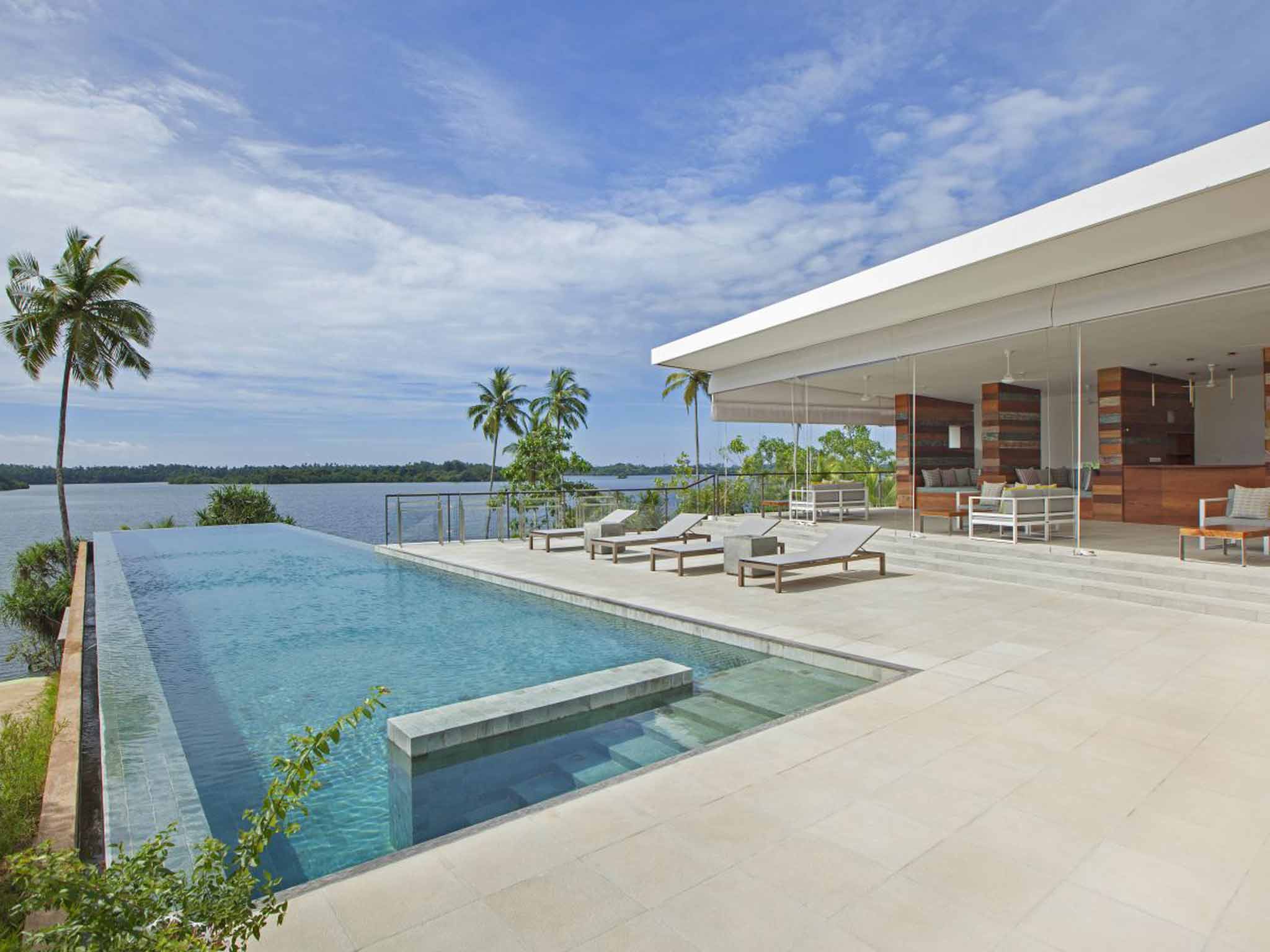Tri Lanka, Galle, Sri Lanka - hotel review: An inspired move away from the beaches

Your support helps us to tell the story
From reproductive rights to climate change to Big Tech, The Independent is on the ground when the story is developing. Whether it's investigating the financials of Elon Musk's pro-Trump PAC or producing our latest documentary, 'The A Word', which shines a light on the American women fighting for reproductive rights, we know how important it is to parse out the facts from the messaging.
At such a critical moment in US history, we need reporters on the ground. Your donation allows us to keep sending journalists to speak to both sides of the story.
The Independent is trusted by Americans across the entire political spectrum. And unlike many other quality news outlets, we choose not to lock Americans out of our reporting and analysis with paywalls. We believe quality journalism should be available to everyone, paid for by those who can afford it.
Your support makes all the difference.At around 5.50pm most evenings, the natural soundscape of the forest around Sri Lanka's Lake Koggala – the chirps of cicadas and squawks of koel birds – is broken by the low thrum of a propeller engine. From the terrace of Tri, cocktail in hand, we have the perfect spot to watch the twice-daily seaplane make its descent and land on the bottle-green water's surface as it arrives from Colombo. A boat is quickly despatched to deliver any Tri residents to its private jetty.
It's the kind of service one might expect from a resort of Tri's calibre, where rooms can cost more than US$1,000 (£714) a night. But it says as much about the remote location. For travellers to southern Sri Lanka, it can be tempting just to stick to the pearl-string of beaches between Hikkaduwa and Tangalle. In a brave but inspired move, Tri's British owner, Robert Drummond, has dipped inland. His 10-room hotel is built on a six-acre patch of land along the north bank of the lake. We arrive by car, past locals drying green peppercorns in the sun, and our bruised derrières pay testament to the beaten track that Tri is off.
Over lunch, the affable and consummate general manager, Oliver James, runs through the activities on offer: yoga, massages, a visit to a tea factory or cinnamon plantation or a boat tour of the lake's islands. But the 21-metre infinity pool, cantilevered out over the lake, seems the only antidote to the 35C heat.
The resort's design is based around the Fibonacci sequence; the main path winds a nautilus shell through the resort's lemongrass bushes and lush lawns. The pool adheres to the golden ratio. The idea, explains James, was to strike a harmonious balance with nature. And it works. Drummond enlisted Shanghai-based architects A00 to build a concrete oasis in the jungle. The firm does a fine trade in installing structures in natural settings that both clash and complement, at once brutal and elegant.
Most of the rooms are set down discrete staircases from the curling path and come with lake views. Three, including ours, have a private pool. Sitting beside it, looking up at the stars, smeared thick as a balm on the night sky, gives the sublime experience of utter seclusion.
Elsewhere, a three-storey tower provides more affordable rooms, topped by a roof terrace where we take sundowners on our first night. The glass, wood and stone box that holds a library and treatment rooms is the most impressive building of all. It's here that we enjoy an ayurvedic massage, and yoga in the top-floor open-air studio.
Best of all is dinner every night. A six-course menu is provided six nights of the week, using mainly local ingredients – prawns from the lake and herbs from the garden. It's ambitious, beautifully-plated food.
On departure, we reflect that perhaps we should have taken the boat trip or visited the cinnamon plantation. But then it is a well-known fact that doing nothing is far more enjoyable with the knowledge that there is something you could be doing.
Location
Given the seclusion, the activities on offer are something of a necessity. There is only so much lounging by a pool one can do. The resort offers cycling tours and visits to the Unesco World Heritage Site of Galle, with its 17th-century Dutch fort, while the laid-back beaches of Unawatuna, Weligama and Mirissa are all within easy reach. There is also a handful of resort restaurants nearby for a change of scene, such as the recently opened Cape Weligama.
Comfort
On design and comfort, our room is unimpeachable. Vines drape from the roof's edge, giving the window shelter from the full glare of the sun, and the bed is all crisp white sheets and abundant pillows. The walls soar to a ceiling 20ft above, the bathroom suite is spacious, and the two balconies have lake views. But, our stay is somewhat marred by faulty outdoor electrics. The pool lights fail to work, precluding the starlit dip and nightcap we have planned on our first night. By the end of our stay, the whole system, including filtration, has gone down and the pool quickly becomes grimy and stagnant. But our visit is only a couple of weeks after the official opening, so hopefully this can be put down to teething problems.
Travel essentials
Tri Lanka, Koggala Lake, Galle, Sri Lanka (00 94 777 708 177; trilanka.com).
Rooms µµµµ
Value µµµµ
Service µµµµµ
Doubles from US$248 (£177), half-board. The hotel is also available for exclusive hire, priced on request.
Join our commenting forum
Join thought-provoking conversations, follow other Independent readers and see their replies
Comments